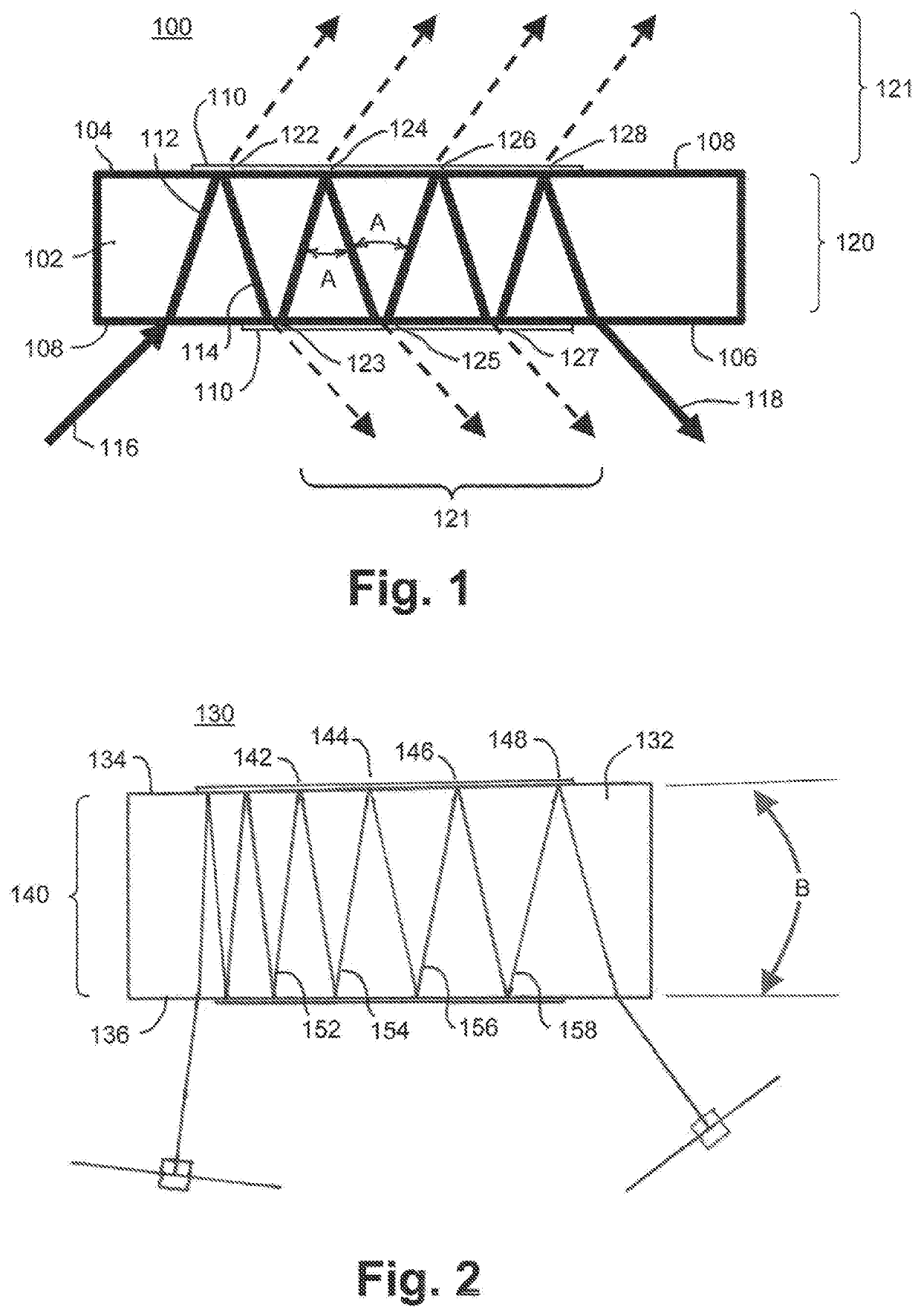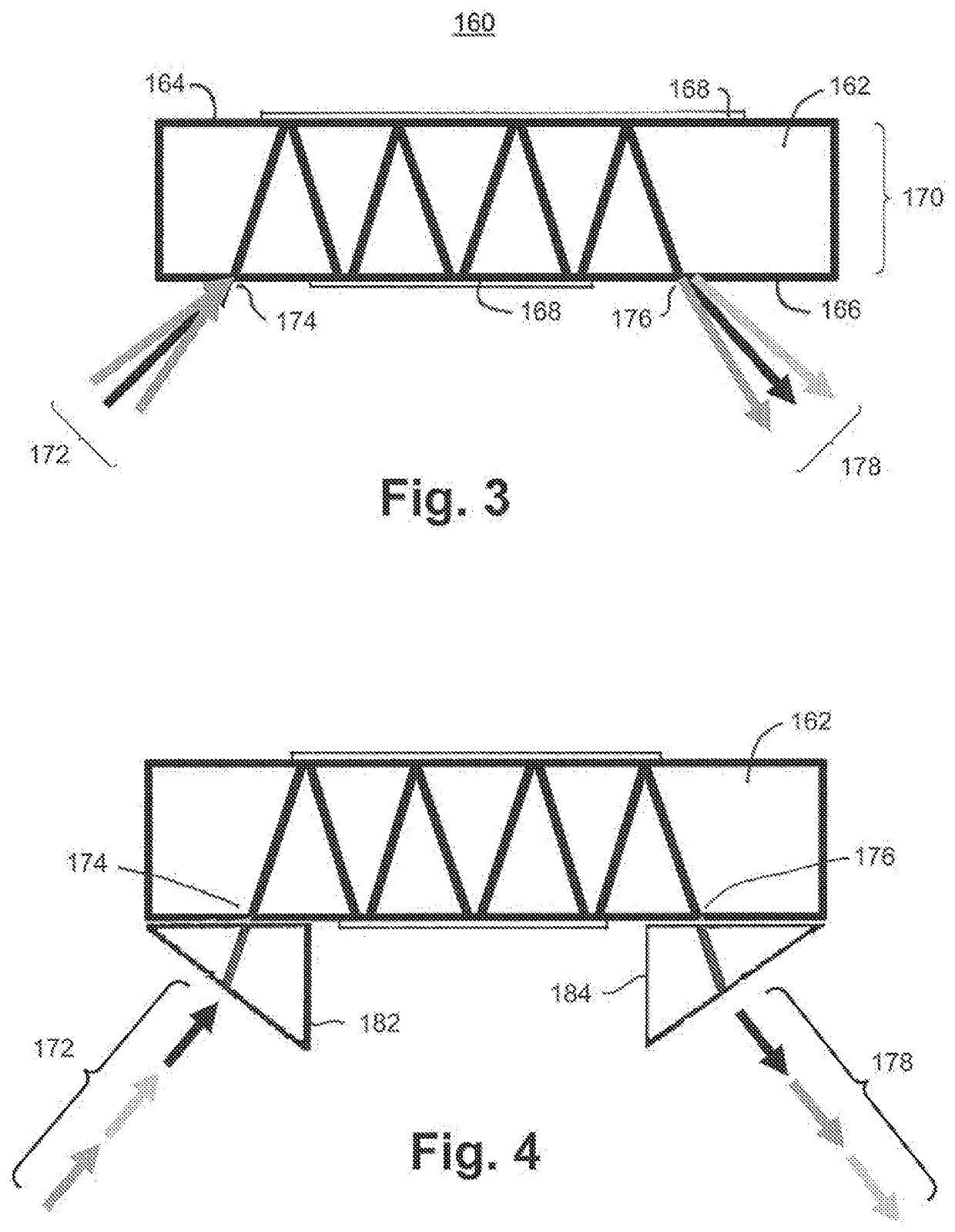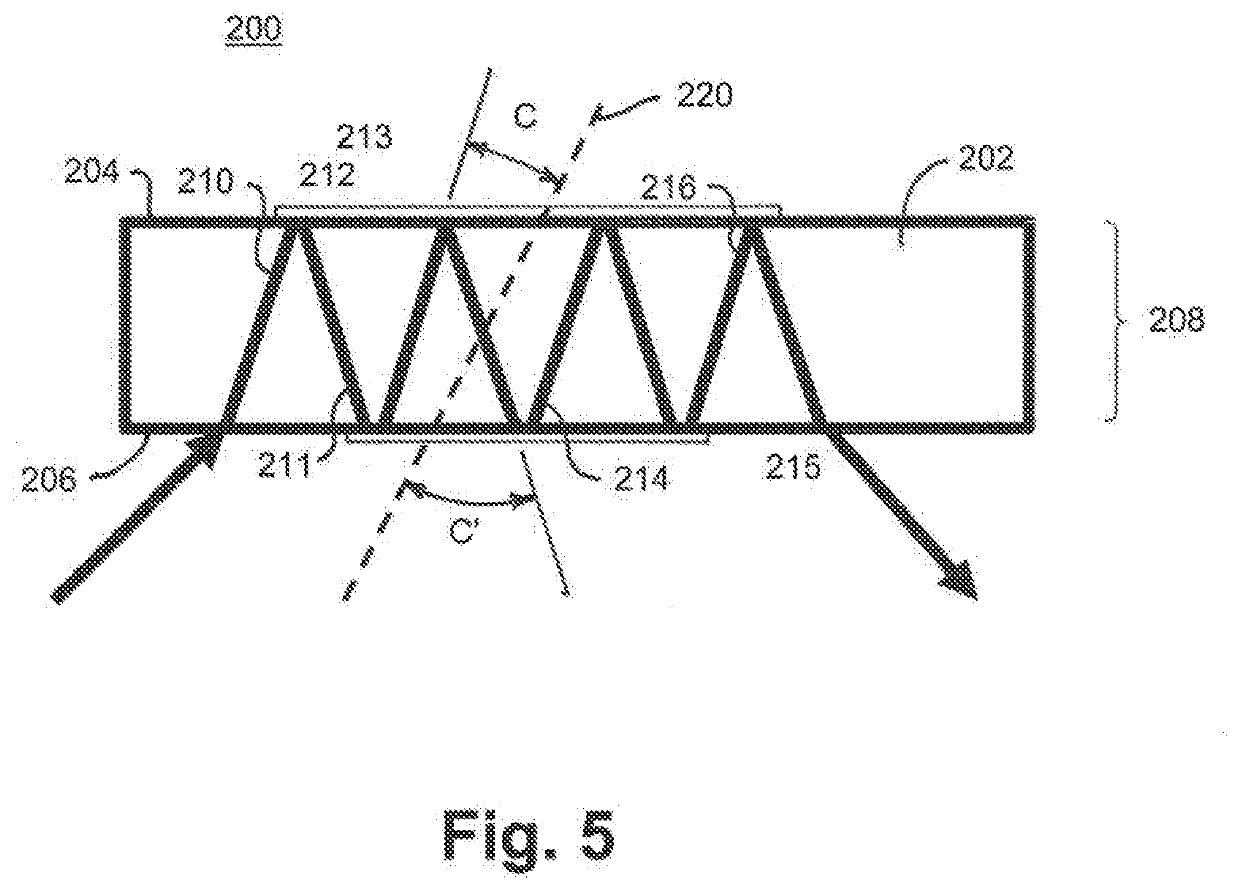Nonlinear optical devices with zig-zag beam paths
a beam path and optical device technology, applied in nonlinear optics, instruments, optics, etc., can solve the problems of not being practical for collinear phase-matching schemes, the use of huang design is limited to relatively thin solid-state nonlinear media, etc., to achieve the effect of improving the beam quality and improving the beam quality of optical parametric amplifier emission
- Summary
- Abstract
- Description
- Claims
- Application Information
AI Technical Summary
Benefits of technology
Problems solved by technology
Method used
Image
Examples
Embodiment Construction
[0069]The following detailed description is of the best currently contemplated modes of carrying out the invention. The description is not to be taken in a limiting sense, but is made merely for the purpose of illustrating the general principles of the invention. The detailed descriptions of embodiments provided below are intended only to be exemplary and explanatory and are not intended to be restrictive of, or on, the invention.
[0070]Unless indicated otherwise, “highly reflecting” indicates a high reflectivity value in the range of 95% R to 100% R at the wavelength in question, “partially reflecting (PR)” indicates a reflectivity in the range of 10% R to 95% R, “highly transmitting (HT)” indicates a transmission value in the range of 90% T to 100% T, and “partially transmitting (PT)” indicates a transmission in the range of 10% T to 90% T. However, in general, the terms HR, HT, PR, and PT are understood by someone well-versed in the art and the above definitions are not intended t...
PUM
| Property | Measurement | Unit |
|---|---|---|
| thickness | aaaaa | aaaaa |
| angles | aaaaa | aaaaa |
| angle | aaaaa | aaaaa |
Abstract
Description
Claims
Application Information
 Login to View More
Login to View More - R&D
- Intellectual Property
- Life Sciences
- Materials
- Tech Scout
- Unparalleled Data Quality
- Higher Quality Content
- 60% Fewer Hallucinations
Browse by: Latest US Patents, China's latest patents, Technical Efficacy Thesaurus, Application Domain, Technology Topic, Popular Technical Reports.
© 2025 PatSnap. All rights reserved.Legal|Privacy policy|Modern Slavery Act Transparency Statement|Sitemap|About US| Contact US: help@patsnap.com



